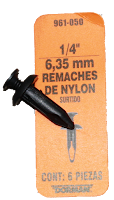My car was finished -- but the dead battery resulted in the engine not being ready for emissions inspection. Apparently, the way dead battery resulted in the emissions information being cleared from the computer and I hadn't driven it enough for the engine to accumulate enough data for the emissions testing equipment. This problem was easy to solve, I just needed to drive the car a bit.
That Burning Smell
And that's where my troubles began. As I rolled up to a red light, I could smell something burning and that's when, in the still morning air, I could see the smoke pluming from the right side of my hood. And the smell, it wasn't oil, it wasn't electrical components burning it was... I just didn't know. So I parked it and headed off to work. That night, when I started it, the battery light was on and no power steering. A little more riding around and the smell and smoking returned.Sniff again. I've oft heard smell triggers memories better than any other sense. Thanksgiving's
 |
| Not the problem |
Overflowing Power Steering
 |
| Leaking power steering reservoir |
Without the power steering pump running, the fluid overflows the reservoir and leaks over the top of the engine (according to the experts at myfordfreestyle), producing the burning smell and smoke.
 |
| Broken Belt |
The access to the front of the engine would be excellent if it not for an air conditioning line running over the top of the engine, so I don't think I could install the new belt from the top, I would need access from the bottom of the engine. The next best way to get enough access to the pulleys would be through the wheel well on the passenger's side. So up went the car and off came the tire.
 |
| Easy as 1,2,3! |
Plastic Rivets: Defeated!
To get reasonable access to the pulleys, I would need to remove the inner fender, affixed to the car with my nemesis fastener. This time, I would not succumb to frustration and decapitate them, but I would figure out how to remove them -- there must be a way.After a little futzing, I had an answer: slowly back out the screw, pry under the screw head to pull it away from the fastener base, then pull the fastener out by the base. Some of the road grime made this a little difficult, but I managed to remove them all in this manner, saving me a few bucks at the auto store for a new set of fasteners. Not sure if this is the "official" method of removal, but it worked.
As the Pulley Turns
 |
| Inner fender removed |
 |
| Belt diagram I made earlier |
Belt Installation, No Cutting Required
Looking at the problem with fresh eyes, I saw enough room to push the belt between the pulley and cover, using a prying tool to do the job. Then it was on to the rest working counter-clockwise: power steering, alternator, crankshaft and then a slack loop held by the tensioner.Getting the belt around the the camshaft and tensioner proved to be somewhat difficult. The tensioner is a pulley on a spring, that applies force to keep the serpentine belt taut. When changing belts, you need to push against the tensioner's spring that effectively reducing the length the belt needs to travel, giving slack for installation or removal. I have a tool designed for this purpose, a 1/4in square drive end on a thin piece of metal. I drafted my youngest kid to apply force so I could loop the belt over the tensioner and camshaft, but the new belt was tight enough that I needed to use the back my pry bar to slip the belt over the crankshaft pulley. Done!
 |
| Mark on AC pulley |
Put the inner fender back into place, with some satisfaction that I was able to re-use the fasteners and back on with the tire. Took the car out for a few rides, let's hope it has enough miles for the emissions test to be run.


































